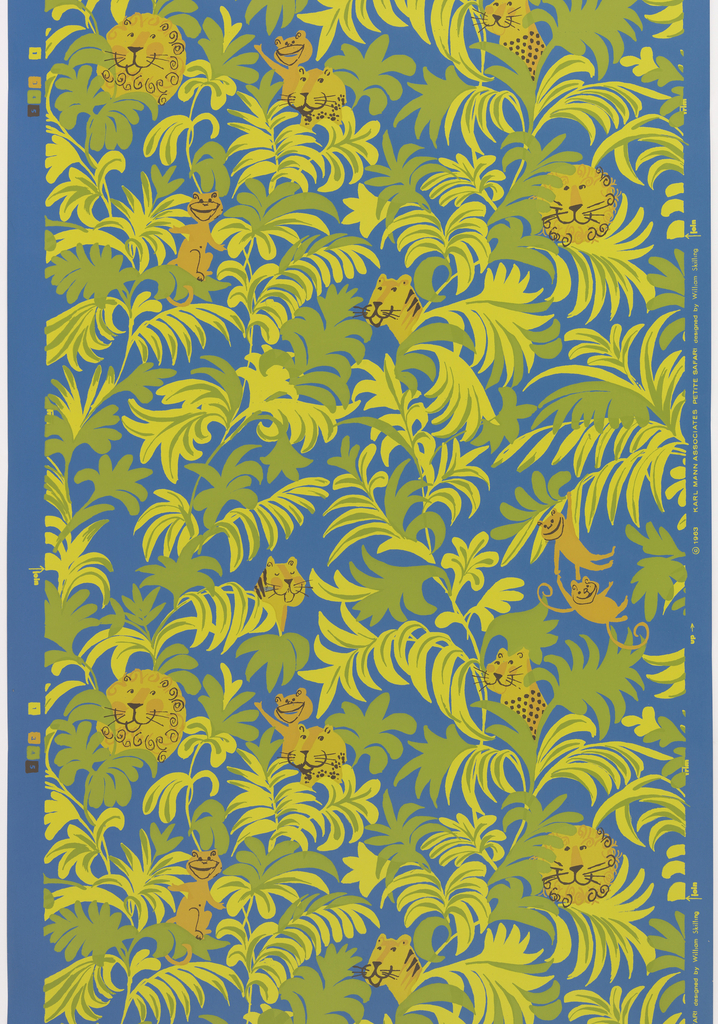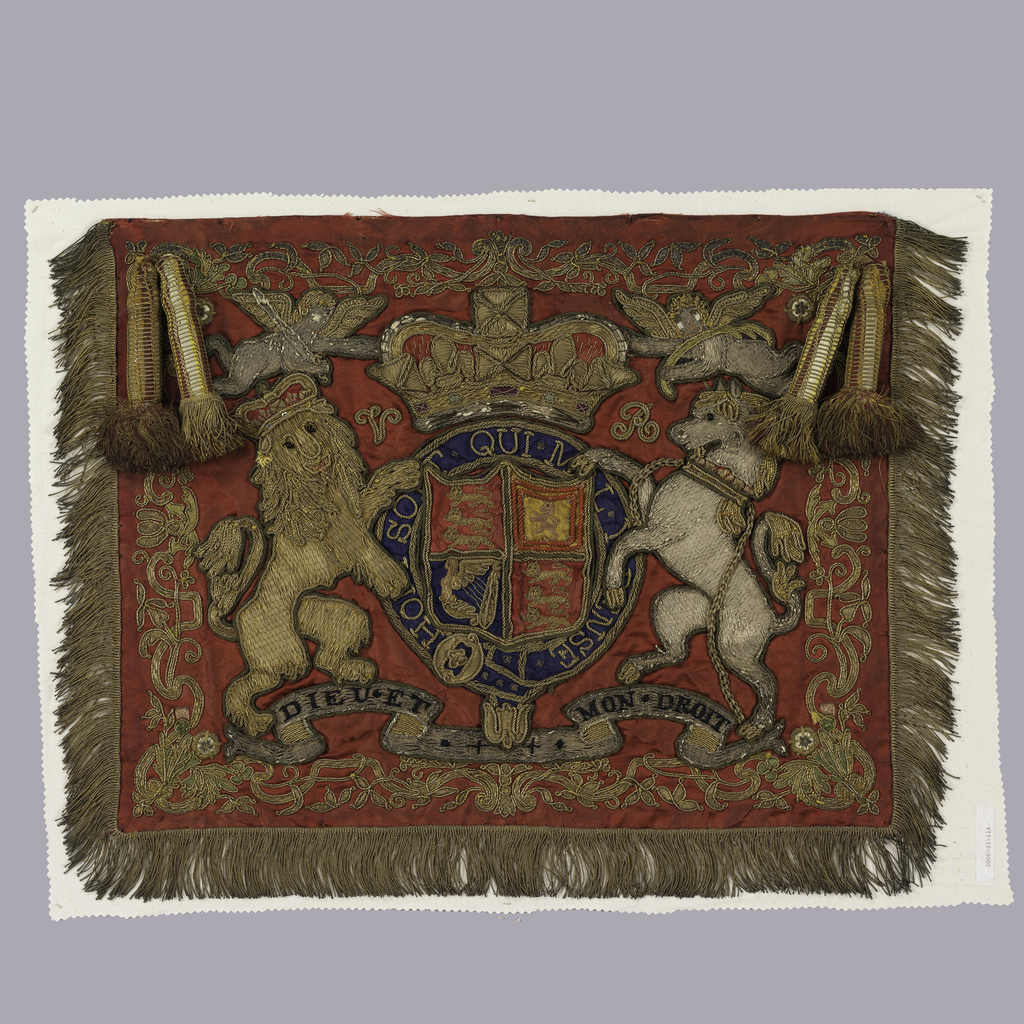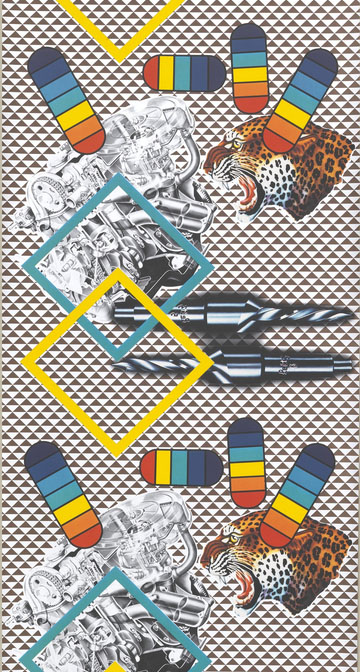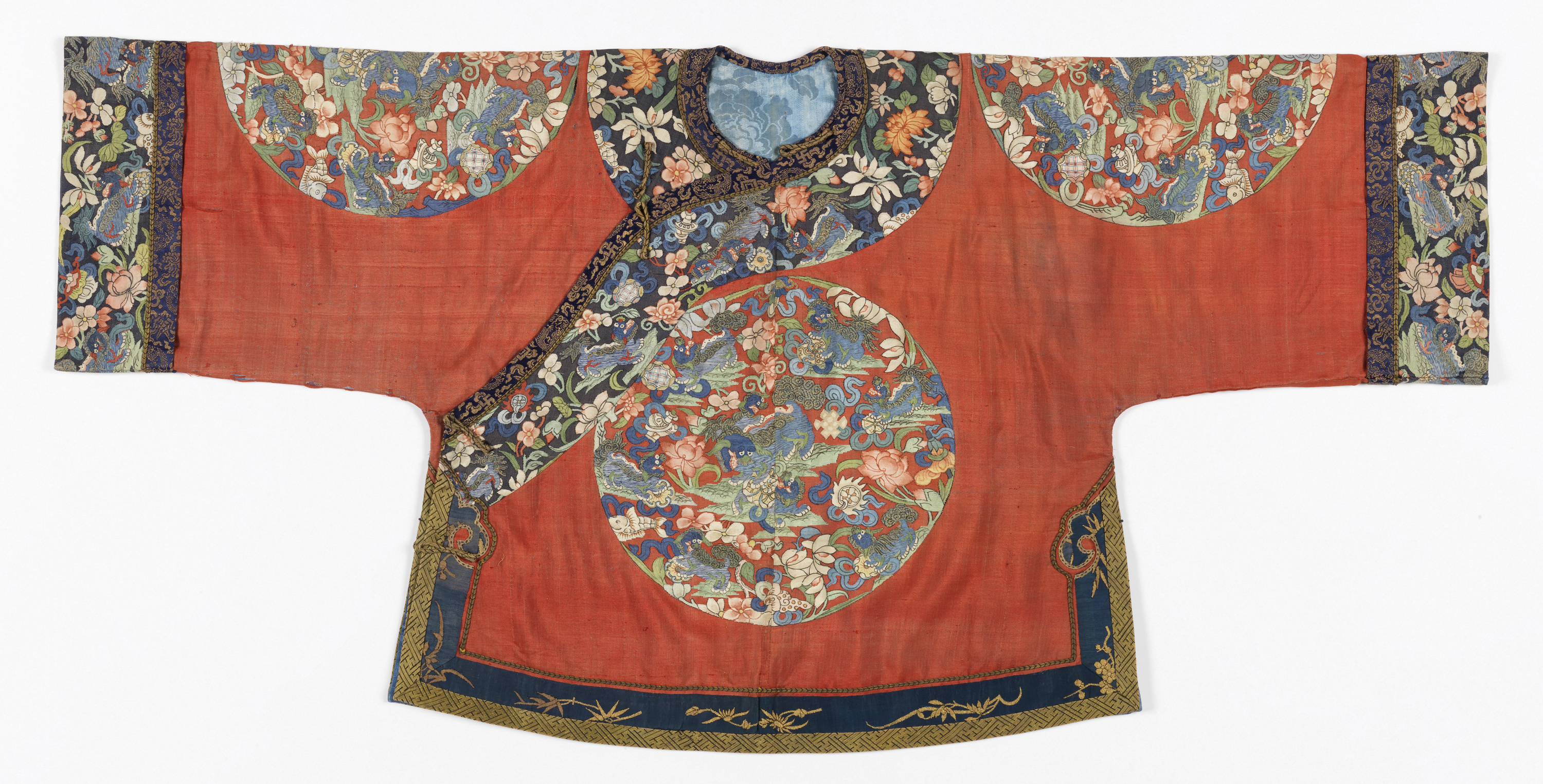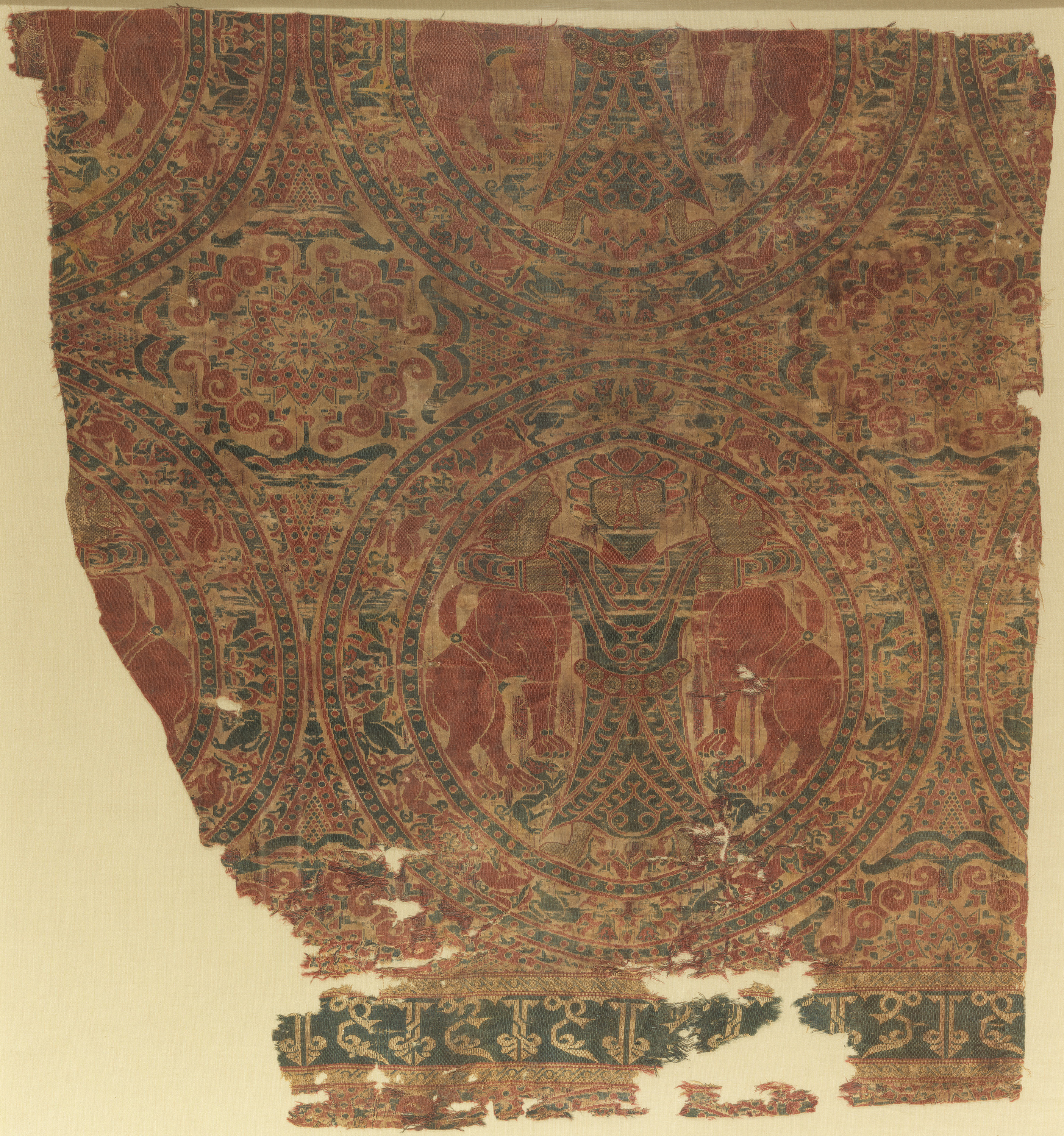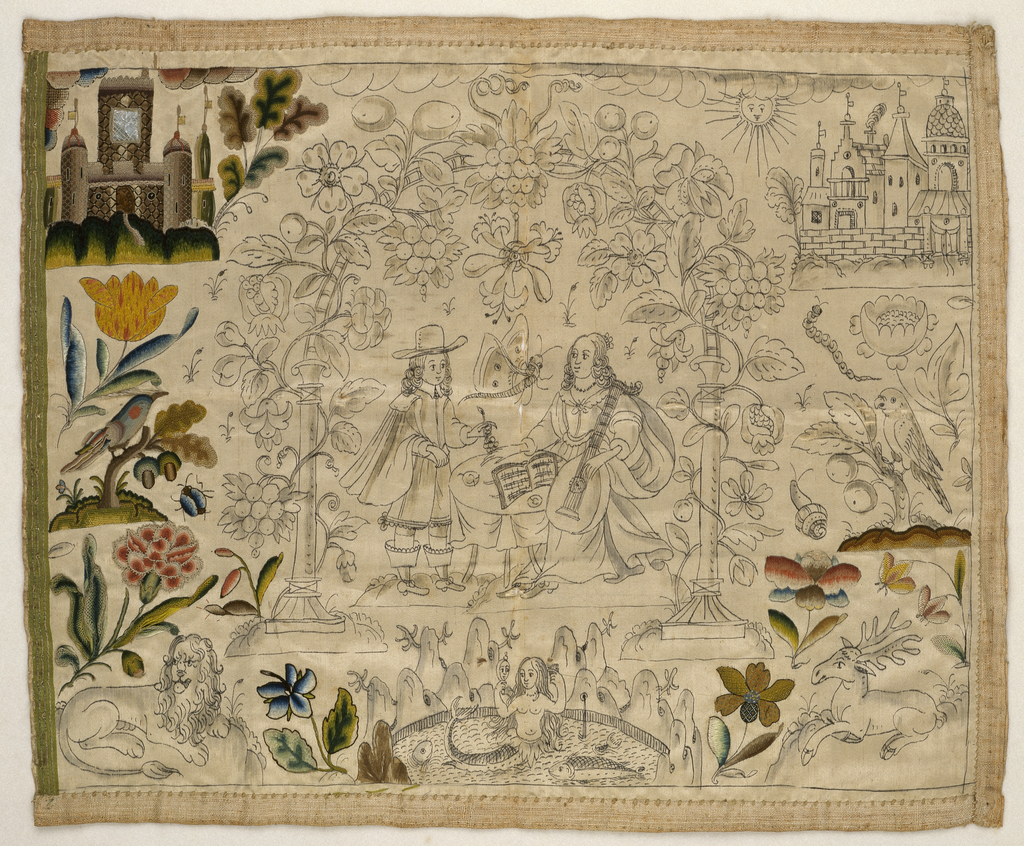This is a delightful wallpaper designed for children. The design is rendered in a very flat perspective and illustrated in a naïve manner, which seems reminiscent of illustrations found in children’s books. A fun and whimsical paper that would allow children to create their own little safaris. The jungle scene contains images of lions, tigers,...
This English trumpeter’s banner dates to the mid-19th century. The crest, or the coat of arms of Great Britain, is flanked by the lion and the unicorn, the symbols of England and Scotland. Additionally, the motto of the English chivalric Order of the Garter, “Honi soit qui mal y pense,” and the motto of the...
This wallpaper by Peter Phillips was one of several designed by contemporary artists for the Marburg wallpaper company in the 1970s. Founded in 1845 in Marburg, Germany, the company is one of the oldest wallpaper producers in the country. Beginning in the 1920s, it became known for collaborating with contemporary artists to create papers, though...
The Qing imperial rulers (1644-1911) were of Manchu ethnicity, and ruled over a mostly Han population. For centuries, Manchu women were required to wear long one-piece robes and Han women two-piece outfits that included a jacket and skirt. Featuring elements of both traditions, this Manchu jacket demonstrates the increasing fusion of these fashions in the...
This rare textile depicting a figure known as the “lion strangler” is a fragment of a tunic, or dalmatic, from the tomb of Saint Bernat Calvó (1180-1243) in Vich Cathedral, Barcelona. Calvó was bishop of Vich and accompanied James I, king of Aragon, during the capture of Valencia from the Moors in 1238. This textile...
In the 17th century, amateur embroiderers or their teachers could commission custom designs from pattern drawers. In Thomas Heywood’s 1607 play, “The Faire Maide of the Exchange,” a character known as the ‘Drawer’ takes detailed instruction for a handkerchief: In one corner of the same, place wanton love, Drawing his bow shooting an amorous dart,...
